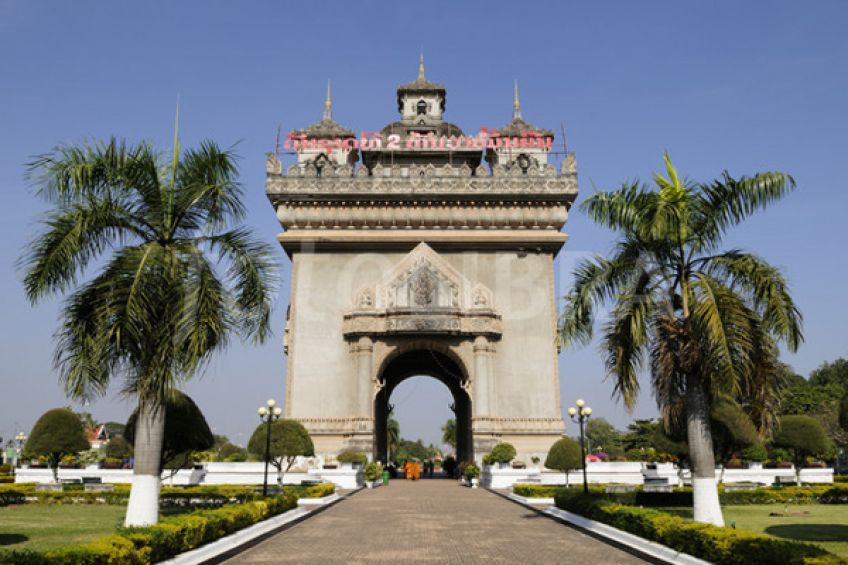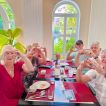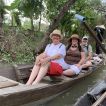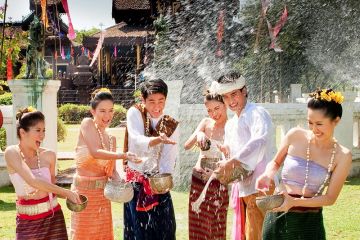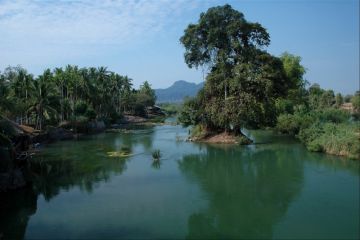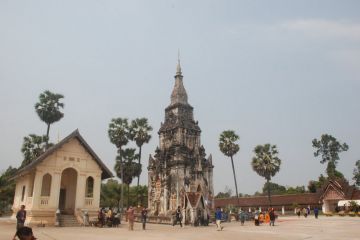- Home
- Destinations
- Destinations
- Vietnam Tours
- Laos Tours
- Cambodia Tours
- Thailand Tours
- Myanmar Tours
- Multi Country Tours
- Multi Country Tours
- All Multi Country Tours
- Multi Country
- Travel Style
- Hotels
- Cruises
- Mice
- Visa
- Visa
- Travel Visa
- Blog
- About us
- About us
- About us
- WHY TRAVEL WITH US
- OUR TEAM
Laos, a Journey Within 22 Days / 21 Nights 0 reviews
Duration: 22 days / 21 nights | Departure Point: Huay Xai, Laos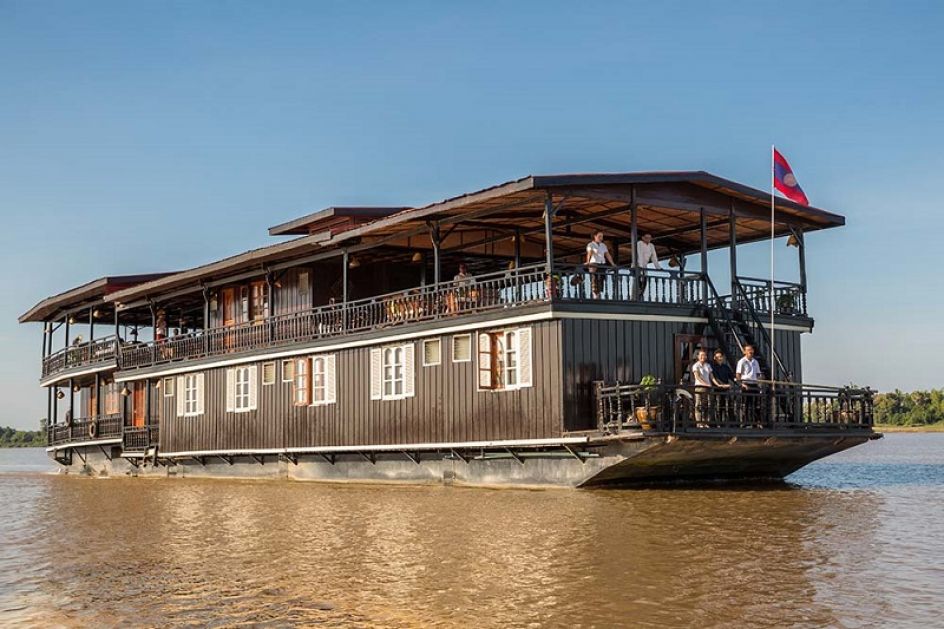

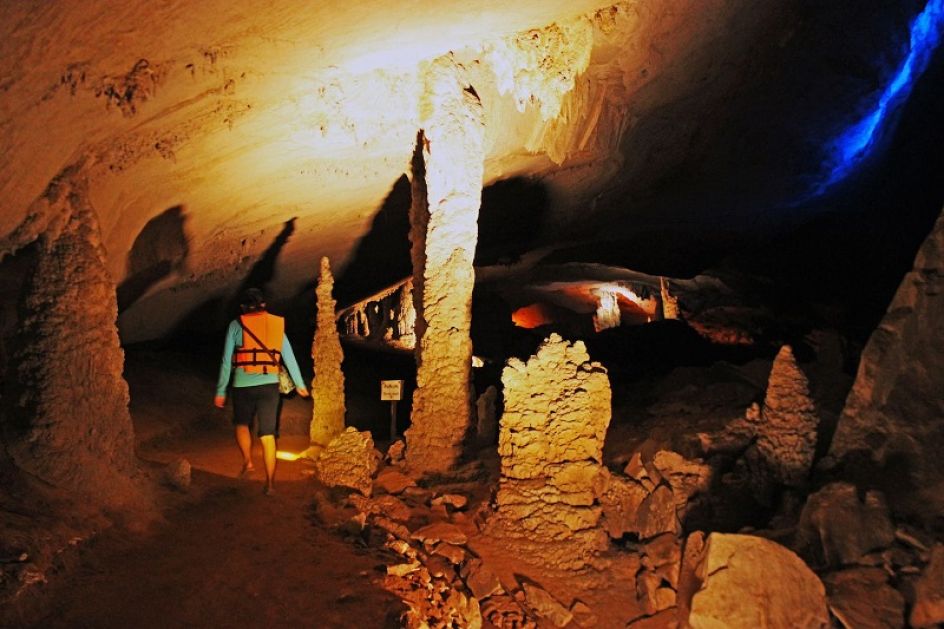
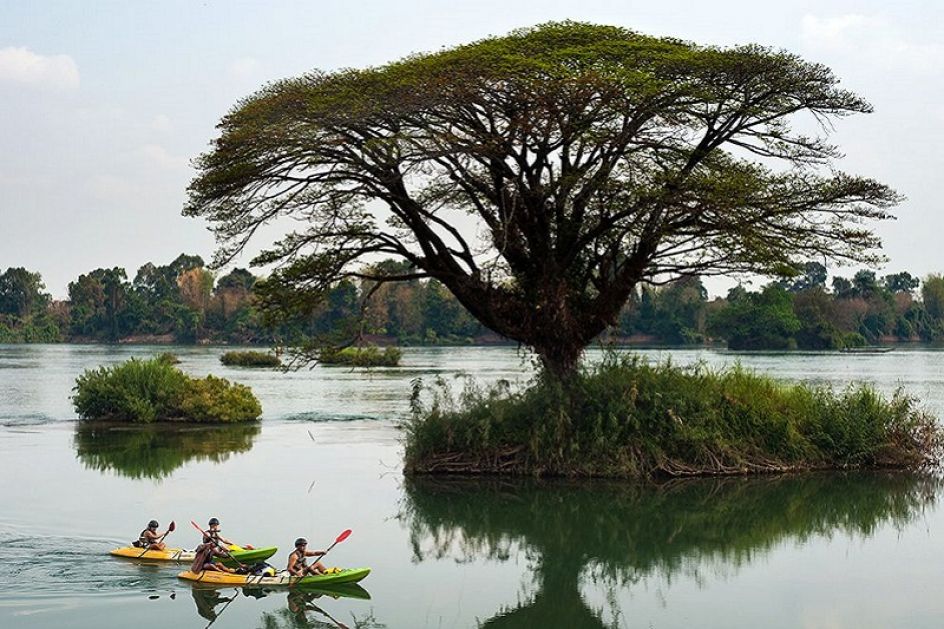
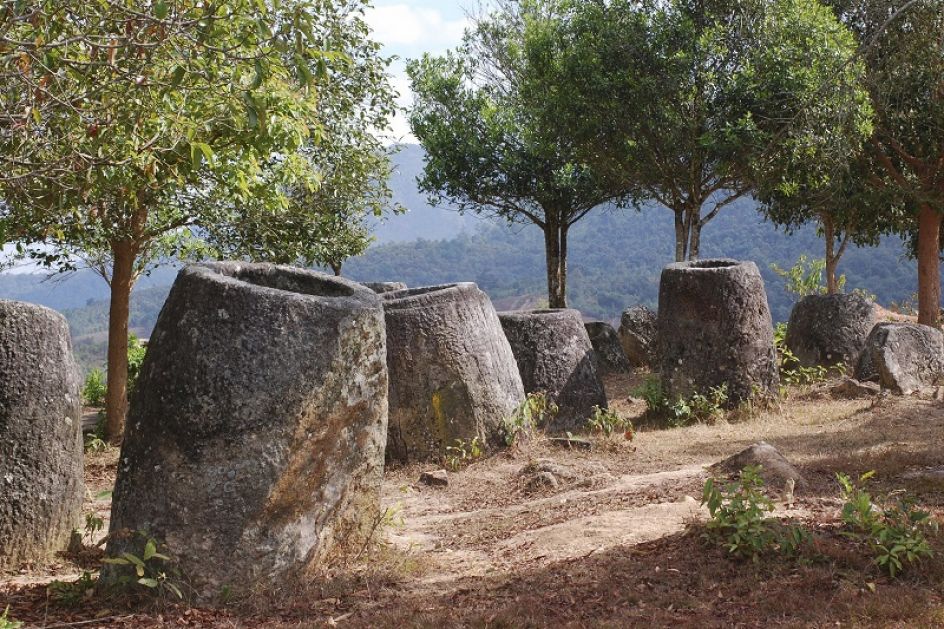
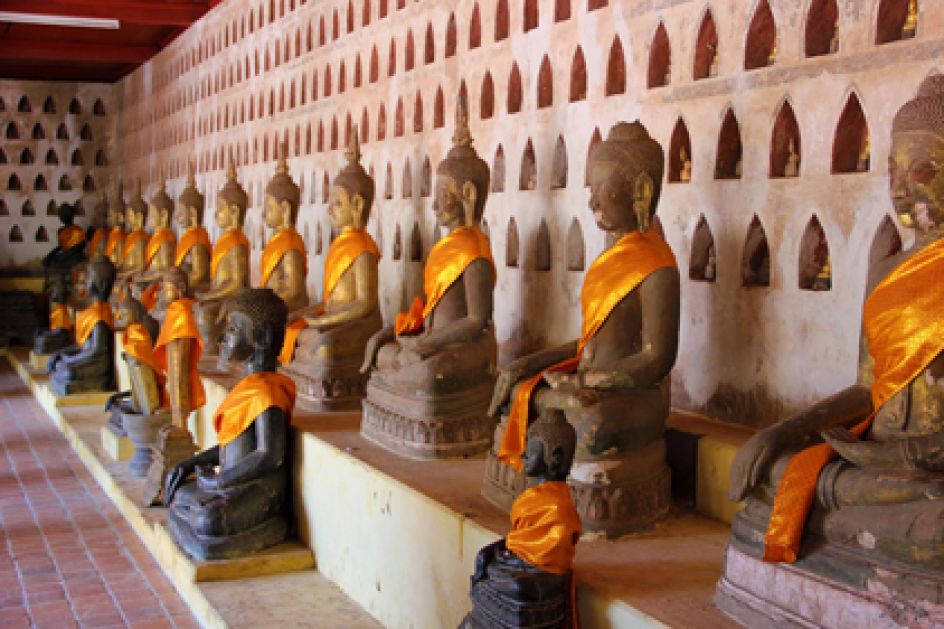

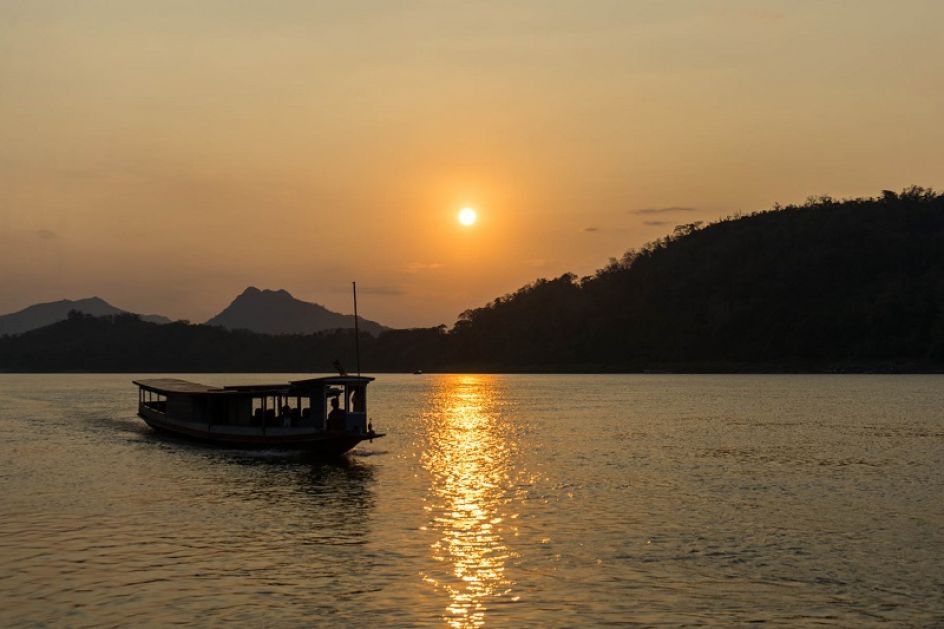
Laos, a Journey Within 22 Days / 21 Nights
- Code:
- 22 days / 21 nights
-
Trip overview
On this Laos tour you will discover the true extent of the country's sublime natural environs when you traverse through a landlocked nation time seemingly forgot.
Beginning in Houei Xay, board a slow boat down the Mekong en-route to Luang Prabang, spending the evening in the sleepy riverside town of Pakbeng.Visit the morning market where local hilltribes sell their wares and observe the making of lao lao, traditional rice alcahol.Venture into the Pak Ou Caves, before reaching the jewel in Southeast Asia's crowne, Luang Prabang.
Luang Prabang, is the spiritual capital of Laos. Dozens of temples fill the town and orange-robed monks wander about the tree-lined streets. Colonial buildings, colorful markets, and cascading waterfalls are all waiting to be explored in Luang Prabang.
Leave for Northern Laos, where you will trek through pristine forest, meeting local ethnic groups and soaking up the elating scenery. Learn about the regions perplexing history, from the effects of war to the influence of communist governments.
On this Laos A Journey Within tour you will visit the enigmatic and bewildering Plain of Jars, spend time in Southeast Asia's biggest village the Laotian capital, Vientiane, before continuing on to the magnificent Kong Lor Caves. Only recently opened to the tourist trail, travelers will no doubt be exasperated by these spectacular limestone caves that tower overhead as you venture into a world of stalactites and other limestone formations. Discover the French colonial architecture of Savannakhet and savor the fragrant coffee of the Bolaven Plateau, a stimulating experience to say the least.
Explore the UNESCO World Heritage Site, Wat Phou, a spectacular pre-Angkorian temple. This epic Laos tour culminates on the laid back islands of Don Det and Don Khone, home to tumbling waterfalls and an environment perfect for some chilled out hammock time.
Trip overview
On this Laos tour you will discover the true extent of the country's sublime natural environs when you traverse through a landlocked nation time seemingly forgot.
Beginning in Houei Xay, board a slow boat down the Mekong en-route to Luang Prabang, spending the evening in the sleepy riverside town of Pakbeng.Visit the morning market where local hilltribes sell their wares and observe the making of lao lao, traditional rice alcahol.Venture into the Pak Ou Caves, before reaching the jewel in Southeast Asia's crowne, Luang Prabang.
Luang Prabang, is the spiritual capital of Laos. Dozens of temples fill the town and orange-robed monks wander about the tree-lined streets. Colonial buildings, colorful markets, and cascading waterfalls are all waiting to be explored in Luang Prabang.
Leave for Northern Laos, where you will trek through pristine forest, meeting local ethnic groups and soaking up the elating scenery. Learn about the regions perplexing history, from the effects of war to the influence of communist governments.
On this Laos A Journey Within tour you will visit the enigmatic and bewildering Plain of Jars, spend time in Southeast Asia's biggest village the Laotian capital, Vientiane, before continuing on to the magnificent Kong Lor Caves. Only recently opened to the tourist trail, travelers will no doubt be exasperated by these spectacular limestone caves that tower overhead as you venture into a world of stalactites and other limestone formations. Discover the French colonial architecture of Savannakhet and savor the fragrant coffee of the Bolaven Plateau, a stimulating experience to say the least.
Explore the UNESCO World Heritage Site, Wat Phou, a spectacular pre-Angkorian temple. This epic Laos tour culminates on the laid back islands of Don Det and Don Khone, home to tumbling waterfalls and an environment perfect for some chilled out hammock time.
Trip Inclusion
- Carefully selected accommodation with breakfast
- Meals as mentioned (B= Breakfast, L= Lunch, D= Dinner)
- Expert English or French speaking guide (for other languages supplements apply)
- Tours as mentioned and air-conditioned transfers
- Single entry sightseeing and permit fees during guided times
- Boat cruises, train ticket and rides while on tour if any
- Service charges and government VAT tax
Trip Inclusion
- Carefully selected accommodation with breakfast
- Meals as mentioned (B= Breakfast, L= Lunch, D= Dinner)
- Expert English or French speaking guide (for other languages supplements apply)
- Tours as mentioned and air-conditioned transfers
- Single entry sightseeing and permit fees during guided times
- Boat cruises, train ticket and rides while on tour if any
- Service charges and government VAT tax
Trip Exclusions
- Other meals that not mentioned
- Other services not mentioned
- International and domestic Flights
- Laundry, telephone calls and expenditure of a personal nature
- Tips, Travel insurance
- Visa arrangement & Visa stamp at international gate
- Drink & Beverage in meals
Trip Exclusions
- Other meals that not mentioned
- Other services not mentioned
- International and domestic Flights
- Laundry, telephone calls and expenditure of a personal nature
- Tips, Travel insurance
- Visa arrangement & Visa stamp at international gate
- Drink & Beverage in meals
Advisory
We pride our TOUR MAP selves in creating personalized travel experiences that suit all your preferences and needs.With this tour you can
- Choose your own departure date
- Select the comfort level of accommodation
- Adjust activities to cater to special interests
- Modify any aspect of the tour as needed
Advisory
We pride our TOUR MAP selves in creating personalized travel experiences that suit all your preferences and needs.With this tour you can
- Choose your own departure date
- Select the comfort level of accommodation
- Adjust activities to cater to special interests
- Modify any aspect of the tour as needed
Tour itinerary
In the morning, the journey begins at 0800, meaning travelers need to reach the border crossing first thing in the morning or on the previous day. Your guide will meet you at immigration to join you on your two day cruise on a private slow boat down the Mekong River to Luang Prabang stopping for one night in Pakbeng. One stop is made to visit a hill tribe village, where a stroll around the village will give you a first-hand look at the traditional rural life of these people.
A delicious lunch is served on board.
Arrive in Pakbeng where you will spend the night. At halfway between Houay Xay and Luang Prabang Pakbeng is an ideal stop for slow boats on their way to Luang Prabang. The town is built with wooden houses along a steep street on the hillside and has a tranquil laid back vibe. Relax and watch the sunset along the Mekong from your balcony.
Overnight in Pakbeng
Houey Xay – Pakbeng by boat (150 km): 6 hours
For early risers visit the morning market where residents of the nearby villages and hill tribes gather to buy and exchange their goods.
Depart around 0830 for the second part of the journey. As you cruise along the Mekong, stop at Ban Baw village to observe the processing of traditional rice alcohol, called lao lao. Reboard the boat to enjoy a delicious buffet lunch.
Stop to visit the Pak Ou Caves, locally called Tam Ting, which contain thousands of gold lacquered Buddha statues crammed into two caves carved out of a towering limestone cliff. The statues range in size from a few centimeters tall to the size of a human, and the view from the mouth of the cave provides sweeping views of the Mekong and Nam Ou rivers. The caves are as well a destination for local pilgrimages, especially during the Lao New Year period of Pii Mai.
After a final 2 hour cruise you will reach Luang Prabang in the late afternoon. Your private guide and driver await to transfer you to your hotel.
Overnight in Luang Prabang
Pakbeng – Luang Prabang by boat (130 km): 5 hours
Your guide will pick you up at your hotel in Luang Prabang at 08:30 with your adapted bikes.
After doing a fitting and adjusting your bike, you will start your tour by the former Royal Palace, now the National Museum, where you will explore the history of Laos. Continue to Wat Mai, a temple renowned for its golden bas-relief.
Visit Wat Visoun, the holiest temple in the city, which was entirely rebuilt in 1887 after being destroyed by the invading Black Flags from Southern China. In the courtyard of Wat Visoun stands the Watermelon Stupa shaped like the fruit from which it takes its name. Continue passed Wat Aham, which was first built in the 1500s, and on to Wat That where the ashes of King Sisavang Vong are kept inside the large central stupa.
Ride along the Nam Khan River to visit Wat Xieng Thong, the most revered temple in Luang Prabang. Located at the end of the peninsula, close to the Mekong, this temple was built in 1560 by King Setthathirat and is decorated with ornate carvings and mosaics.
This afternoon you will leave the town behind and ride to the Phosy Market, where you can join the locals and support vendors by buying fresh products or fruit. Your guide will be here to encourage you to taste some of the exotic flavors of the local fruits, helping to identify new items not found in your grocery store back home!
Continue your ride to Ock Pop Tock. This non-profit organization seeks to preserve traditional weaving techniques, a trade which was once an important source of income for many Lao families but is slowly fading out as modern technology has evolved. A short tour introduces the process of silk weaving from the initial stages of creating the dyes to the final process of loom weaving.
Ride along the Mekong back in to town for your final stop of the day. The Traditional Arts & Ethnology Centre is dedicated to exploring the rich diversity of Laos’ ethnic minorities. Traditional costumes, tools, and artifacts are on display alongside in-depth descriptions and written histories. It is a great opportunity to gain insight in to the Lao people (Note: closed on Mondays).
Return to your hotel by bike.
Overnight in Luang Prabang
For early-risers (0530) there is a very special dawn visit to witness the long lines of orange-robed monks leaving their pagodas to receive offerings of food from Luang Prabang residents. It is a beautiful, serene ceremony that highlights the spiritualism of the Laos people. Return to the hotel for breakfast.
Your guide will pick you up from your hotel for a short transfer through the Luang Prabang countryside to Kuang Si Waterfalls. Along the way you will drive through beautiful landscapes of rice fields, hills, and small villages. There are also viewpoints overlooking the Mekong River.
Stop en-route to visit a small village which is home to one of the area’s many ethnic minorities. You will have an opportunity to learn about their traditions and culture, much of which has remained unchanged for centuries.
Upon reaching Kuang Si Waterfall, relax and enjoy the beautiful natural surroundings. The jungle and dense woods surrounding the falls is perfect for exploring on foot. For the adventurous, it is possible to walk to the top of the falls via a steep track where stunning views await you at the top.
These waterfalls cascade down a multilevel limestone formation creating a series of turquoise blue pools perfect for swimming in on a hot day (Note: when bathing please be respectful, wear a sarong and be careful not to show too much skin).
Stop to enjoy a picnic lunch at the waterfalls.
Before you leave you might like to visit the bear sanctuary which is next to the falls, run by Free The Bears Fund Inc. There are currently 23 Asiatic Black Bears living in the sanctuary, which has saved them from poaching. The main threat to these bears is poaching due to the use of their bile in Chinese medicine. You can read about their habits and observe their playful nature, whilst learning about the difficulties they are facing.
On the way back to Luang Prabang, you will stop at the Kuang Si Butterfly Park to visit the beautiful garden filled of hundreds of Laos’s butterflies! (Note: closed on Tuesday)
The remainder of the day is free at leisure.
Overnight in Luang Prabang
Luang Prabang – Kuang Si waterfalls (32 km): 45 min
After breakfast, you will leave for Phonsavan, taking approximately 6-7 hours.
Stop en route to have lunch in a local restaurant.
Arrive in to Xieng Khuang. Your guide and private car will meet you and transfer you to your hotel for check-in.
Xieng Khuang is a town that has been totally rebuilt after it was destroyed during the secret war in Laos. The town is now located 30 km away from where it was originally. Today, Xieng Khuang, locally called “Phonsavan” is the gateway to the Plain of Jars.
After checking into your hotel, enjoy a city tour and visit the MAG Center in the town. MAG is a humanitarian organization clearing the remnants of conflict for the benefit of local communities worldwide. Lao PDR is the most heavily bombed nation in the world (per capita). Free entry, open every day from 0800 – 2000.
Overnight in Xieng Khouang
Luang Prabang – Phonsavan (306 km): 6-7 hours
In the morning you will journey through Phonsavan and the Plain of Jars.
The Plain of Jars is a huge archaeological complex littered with mysterious 2000 years old stone jars sized from 70cm up to 3 or 4 meters. Their true origin remains a mystery. It seems that they were carved into boulders. Several researches lead by the French archaeologist Madeleine Colani in the 30’s suggested that they could be old graves, but to this day they remain an enigma.
Your trip will enable you to visit the 3 sites and also discover some local villages where you can observe local village life. Site 1, close to the town is settled at Thong Hai Hin and is the biggest site. Site 2 is at Hai Hin on Phou Salator, “Phou” in Lao means “Mountain”. End your tour at site 3 in Hai Hin Lat Khai. Site 3 is the most impressive with over 150 jars. Close to this site, you will visit Ban Xiengdi where there is a small monastery with Buddha images. On the way back, you will pass areas that were important battlefields during the American secret war. You can still see bomb craters from that time today.
Attention: The Plain of Jars has been heavily bombed during the war and you have to respect all the signs and stay along the defined trails due to bombs, UXO and landmines.
Lunch at a local restaurant in Phonsavan.
In the afternoon, enjoy a half day trip to Muang Khoun. Muang Khoun one place in the old provincial capital that was been destroyed by the American bombings during the secret war. Muang Khoun is home to unique sitting giant Buddha as well of some old pagodas that lies in ruins. The foundation and columns of Wat Pia Wat are still standing and close to this site, there is also an old 30m stupa constructed in the Lan Xang/Lanna period.
Then return to Xieng Khouang.
Overnight in Xieng Khouang
After breakfast your guide and private car will meet you at your hotel and you will start the journey by car to Sam Neua, taking approximately 6-7 hours. Along the way enjoy the beautiful scenery and see local village life. You will stop for lunch at a local restaurant.
Arrive in Sam Neua. After checking into your hotel you will be taken on a tour of the town. This will include a visit to the Nam Sam River Promenade followed by Wat Phoxaysanalam which is home to a Buddha statue dating back to 1565. Visit weaving houses near the temple to see stunning cotton and silk textiles being made. Finish the tour with a visit to the market selling stunning Houaphanh textiles and clothes from different ethnic groups, woven bamboo items and traditional foods and animals.
Overnight in Sam Neua
Xieng Khouang – Sam Neua (258 km): 6-7 hours
After breakfast, drive to Viengxay (approximately 1 hour) where you can explore this traditional town and the surrounding beautiful landscape of limestone peaks and forests.
The town of Viengxay contains hundreds of caves which sheltered local people and the country's future leaders for a vital period in world history.
In the 1960s Laos was caught up in the conflict known to the world as the Vietnam War. For nine years, from 1964 to 1973, more than 20,000 people lived in a 'hidden city' they built inside the limestone peaks all around the area to try to survive daily aircraft bombing raids directed by US forces.
They were only able to farm or work at night, so inside the caves they built everything they needed for their society to survive, including schools, hospitals, markets, a radio station and the headquarters of the Lao Patriotic Front - also known as the Pathet Lao.
Take the audio tour that tells the story of the 'hidden city' through the history that created it and interviews with local people and discover the area's beauty as well as its fascinating hidden history.
Lunch will be included at a local restaurant.
After the visit, you will start the drive to Vieng Thong.
Overnight in Sam Neua
Sam Neua – Vieng Xai (30 km): 1 hour
Sam Neua – Vieng Thong
This morning, you will leave Sam Neua around 8:30 for the Nam Et-Phou Louey NPA (National Protected Area) for about 1 hour.
Here you will experience the Nam Nern Night Safari and stay in a simple ecolodge, all of which has been developed with the local community. Learn about wildlife conservation, medicinal plants, traditional agriculture and the history of the Secret War from your local Khmu guide.
Upon arrival at Ban Son Koua, an ethnic Khmu Village, you will enjoy lunch.
The village, guides and boatmen will meet you and take you on a short tour of the village where you will learn about the animist tradition of appeasing the village spirit. Then embark on a 1.5 hour journey to the park substation on the Nam Nern River by long‐tail boat, along the way learning about upland rice cultivation and having opportunities to spot monitor lizards and bird life.
After lunch, receive a briefing by park staff about the on‐the‐ground efforts in protecting tigers and their prey. Around the middle of the afternoon you will depart for the night safari.
Stopping near a salt lick, you will hike into the forest. Your local guide, a skilled hunter and tracker, will explain how local people track deer and other wild ungulates. The guides point out evidence of wildlife, such a tracks or scat at the salt lick.
The boats will continue upriver to the dinner site, a sandy, flat bank, where you will have a picnic dinner around a campfire. After dinner, your guides tell Khmu folktales and stories about dragons, wildlife, and ghosts. They educate you about the species of animals they may see during the spotlighting and explain the rules and expectations for spotlighting.
Depending on the amount of moonlight, depart for the night spotlighting 1-2 hours after dark, floating down river with engines off. There is only one light per boat. Only guides use the light, to avoid scaring the animals. The guides and boat drivers communicate via hand signals to avoid talking that might disturb the animals. The boat is very quiet so as not to disturb the animals. Animals that may be seen include Sambar Deer, Otters, and Barking Deer, various species of Civets, Slow Loris, Porcupine and Owls (Hogbadgers, Asian golden cat and wild dogs have also been seen).
At the end of the spotlighting, the boats arrive at the evening camp. Before going to bed you will be able to check out a variety of insects attracted to the black light set up near the substation.
Overnight in Nam Nern
Vieng Thong – Ban Son Koua: 1 hour
Before breakfast, your local guide will take you on a walk around the jungle, teaching you the use of medicinal plants and explaining the history of the site, which was once a major settlement during the Secret War. After breakfast, the boats float back to the village at a relaxing pace with engines off, pointing out birds along the way.
Upon arrival in the village, you will be invited to try earthen jar rice wine (lao hai). Before departing, you will be asked to fill out a wildlife monitoring form that is used to monitor wildlife abundance and indicate the amount of bonuses put into the village development fund from the tour costs. This is one of the keys to the success of the project because locals are therefore incentivized to preserve the wildlife and the habitat.
After lunch in a local restaurant continue driving about 4 hours to Nong Khiaw.
After checking in to your hotel, enjoy the sunset over the river. There is a choice of local restaurants within walking distance.
Overnight in Nong Khiaw
Nam Nern – Nong Khiaw (210 km): 4 hours
After breakfast your guide and private car will pick you up from you hotel and you will drive approximately 2.5 hours to Luang Prabang.
Enjoy lunch at Tangor restaurant.
After lunch, continue your trip down to Vang Vieng. Upon arrival in Vang Vieng, check in to your hotel and enjoy the beautiful limestone karst scenery. Sunset on the Nam Song River is not to be missed!
Overnight in Vang Vieng
Nong Khiaw – Luang Prabang (134 km): 2.5 hours
Luang Prabang – Vang Vieng (230 km): 5 hours
Today is very flexible. If you are an adventure enthusiast then all sorts of options can be booked locally (or in advance). These include kayaking, trekking, mountain biking and rock climbing. Most can be done as half or full days but none are included in this itinerary.
This morning you will have a tour with your driver and guide to include the Tham Jang Cave. Inside you will find spectacular stalactites and stalagmites as your guide tells you the local mythology surrounding this cave. A viewpoint offers an impressive panorama and once you climb back down you have the option to swim in natural spring water.
Visit an extensive organic farm which specializes in refreshing mulberry tea and there are also local markets which might interest you.
The afternoon is free at leisure.
Overnight in Vang Vieng
After breakfast you will check out and drive to Vientiane, taking 3-4 hours. Stop en route at the local market of Don Mak Kai. You may be surprised by what you see for sale here!
The rest of the day is free at leisure in the peaceful capital. You might like to enjoy the numerous cafes, restaurants and spas as well as shopping, including the evening market on the banks of the Mekong.
Overnight in Vientiane
Vang Vieng – Vientiane (160 km): 3-4 hours
After breakfast drive to Buddha Park which takes around 45 minutes away. On the way, stop and take photos of the Friendship Bridge which was built by the Australian government in 1994 and links Laos and Thailand.
Arrive at Buddha Park and enjoy a stroll around the park. Also known as Xieng Khuan, this unusual park is filled with over 200 Buddhist and Hindu statues. The quiet and tranquil setting along the Mekong River is a contrast to the slightly eccentric sculptures which were built in 1958 by a Laos’s shaman. The concrete sculptures are bizarre but intriguing, sitting majestically in the peaceful park.
After visiting Buddha Park, start the drive back to Vientiane. En route, stop at Mai Savanh to explore the traditional textiles of the Lao people. This shop specializes in high quality silk products and involves several families in their process, from the northern province of Luang Nam Tha Province and the southern provinces of Attapeu and Sekong. (Note: Mai Savanh is closed on Saturday & Sunday)
Another stop will be made at the Lao Disabled Women Development Center. This center aims to bring knowledge and skills to disabled women so that they can become self-sufficient, productive members of the community. The center focuses its efforts on helping people with disabilities gain independence and self-confidence. A visit to the center provides you with the opportunity to talk to these women and to observe their skill at creating handicrafts such as handmade paper.
Lunch is at Makphet Restaurant, established by Friends International (www.friends-international.org). Makphet is a charity-run restaurant aiming to train the area’s street children in the hospitality industry. Professional chefs from around the world have volunteered their time in developing the menus and training the staff. The food is excellent, and the staff excel, bringing true Lao-hospitality with the service.
Start the afternoon with a visit to That Luang, the holiest site in Laos. Constructed by King Setthethirat in the 16th century, the temple is resplendent as the sun is shines upon its towering golden spire.
Then, enjoy a panoramic view over the city as you climb the stairs to the top of Patuxai, Vientiane’s own “Arc de Triomphe”.
Continue down Lane Xang Avenue the serene Wat Sisaket, the only temple left intact after the Siamese (Thai) invasion in 1828. It is one of the most beautiful temples in the capital, and its breezy teak covered hallways are filled with thousands of miniature Buddha statues.
Continue on to the nearby Wat Phra Keo. Used as a religious museum, Wat Phra Keo displays a collection of both Lao and Khmer works of art.
Overnight in Vientiane
Vientiane – Buddha Park (24 km): 45 min
This morning you will be met by your driver and guide in Vientiane, to begin the journey south along route 13. This first leg of the journey takes around 3 hours and it is interesting to have a quick stop at Wat Prabath Phonsane (‘Temple of the footprint of Buddha’).
Lunch will be included at a local restaurant (discuss with your guide where you would like to stop).
You will then leave the main road and enter the Phou Hin Poun NPA (National Protected Area). The scenery will become much more spectacular, featuring limestone karsts, forests and rice paddies. From leaving the main road to reaching your destination will take approximately 2 hours.
Once you arrive in the small town of Ban Kong Lor the rest of the day is at leisure to admire the views. You might like to take a walk through the surrounding villages. If so then your guide will be happy to accompany you.
Overnight in Ban Kong Lor
Vientiane – Ban Kong Lor (290 km): 6 hours
For early risers we recommend a walk at around 06:30 to explore the villages as they wake up and prepare for the day. Discuss this with your guide.
After breakfast you will take a short drive (5-10 minutes) towards the Kong Lor Caves. You will be given life jackets and head torches before a short walk around to the main entrance of the cave. Upon entering the cave, you will board a long tail boat which will take you through the length of this spectacular cave along an underground section of the Hin Boun River - a length of 7.5km before you see daylight again!
The river flows all year and reveals vast formations of stalactites and stalagmites, which you will explore partly on foot whilst inside the cave. In places the cave is up to 90m wide and 100m high. The cave is still used by local villagers as an access route to the region beyond (it is far quicker than climbing over the mountains which this cave cuts through!).
Once out on the other side you can stop for refreshments and walk to local villages, enjoying the scenery and observing a simple way of life (discuss with your guide how far you would like to walk).
Return by boat, travelling ‘downstream’ through the cave, to Ban Kong Lor. Enjoy lunch on your own account before travelling south.
The drive to Thakhek will take approximately 4 hours so you will hopefully arrive in time for a stroll along the Mekong at sunset. Thakhek is a very sleepy town with some very attractive colonial buildings. Enjoy a relaxing evening.
Overnight in Thakhek
Ban Kong Lor – Kong Lor Caves (8 km): 5-10 min
Ban Kong Lor – Thakhek (190 km): 3-4 hours
After a leisurely breakfast, your guide will meet you around 09:30 to continue your journey south. The drive to Savannakhet takes approximately 1.5 hours. Before entering Savannakhet you will make a stop at the beautiful 16th Century temple of That Ing Hang. An impressive central stupa dominates a courtyard which is flanked by statues of Lord Buddha, in a style similar to Wat Sisaket in Vientiane. That Ing Hang is among the most revered temples in Laos and many Buddhists will travel here during December for the annual ‘Boun Phathat’ ceremony.
Continue in to Savannakhet. The city is most famous as the birthplace of the father of the Lao People’s Democratic Repulic (Lao PDR), Kaysone Phomvihane, who was born here in 1920. Take a short tour of the architectural highlights, which include various French villas and the striking St. Teresa Catholic Church.
Visit the small but very interesting Dinosaur Museum. Dinosaur remains are being found nearby which are between 150,000,000 – 250,000,000 years old. You can speak to the resident paleontologists about their work and the proceeds from your visit help to keep this project going.
After lunch in a local restaurant it will be time to hit the road again for the drive to Pakse, which takes approximately 3.5 hours. Check in and enjoy the rest of the day at leisure.
On the confluence of the Mekong and the Sedone River, Pakse is the most important town in southern Laos. Pakse is the home a very important Vietnamese community, so if you visit this town during the Têt (Vietnamese New Year), do not be surprised if many shops are closed. This small city has a mixture of Chinese and French architecture and some lively markets.
Overnight in Pakse
Thakhek – Savannakhet (150 km): 2 hours
Savannakhet – Pakse (215 km): 3.5 hours
Guests will be picked up at their hotel at 0900 for a short orientation of Pakse Town.
Then depart for the Bolaven Plateau, a mountainous region home to dozens of hill tribes, waterfalls and coffee and tea plantations.
The first stops are at Tad Fane and Tad Yuang waterfalls. Tad Fane is a set of twin 120-meter-high waterfalls formed by the merging waters of the Champy and Pak Koot rivers. These impressive falls are situated on the edge of Dong Hua Sao protected area, 38km from Paksé (Note: water levels may vary accordingly to the previous rainy season).
Make a short stop in Paksong, the small capital of coffee. Then, continue east to reach the Sinouk Coffee Resort. An expert in coffee will guide you through the coffee plantation and you will learn more about how the coffee trees are grown and the difference processing stages.
After the visit, enjoy a delicious lunch. Most of the vegetables supplied to the cuisine come from our home-grown organic garden. Following lunch, you will of course have the chance to taste different types of coffee.
On the drive back to Pakse, two stops will be made. The first stop is the visit of Tad Lo waterfalls, a beautiful formation of three separate falls. From the bridge guests will first see Tad Hang and then Tad Lo in the distance. The most impressive of the three, Tad Suong, is located a further 10km upriver.
The second stop is the small village of Ban Houay Houn, famous for his Katu textiles. Here, you will have the chance to observe the women weaving without a traditional loom but using their legs to stretch the fabric.
In the late afternoon you will transfer to the small town of Champasak, on the banks of the Mekong River.
Overnight in Champasak
Pakse – Bolaven Plateau – Champasak (40 km): 1 hour
After breakfast you will visit Wat Phou in the cool morning air. Recognized by UNESCO as a World Heritage Site, Wat Phou is a spectacular pre-Angkorian temple that sits among the rice fields and waterways of southern Laos. The temple was constructed in three levels: the bottom level is focused on the baray (water reservoir) and promenade, the second level features quadrangular pavilions and galleries of carvings, and the top level is the sanctuary itself. The temple was built by the rulers of the Khmer empire before the construction of Angkor Wat. This site served as the most important economic and political centre of the region and still is one of the Lao people’s most revered temples.
The rest of the day is at leisure to enjoy the beautiful surroundings of Champasak and the facilities in your hotel. If you get itchy feet then bicycles are a great way to explore independently.
Overnight in Champasak
Champasak – Wat Phou (8 km): 15 min
After breakfast, enjoy Champasak and the surroundings.
You will then drive south to the 4000 Islands Region. Called “Sipandon” in Lao language, this area is where the Mekong stretches to over 14km wide. The river flows between an unknown number of islands, creating waterfalls and rapids.
Stop for lunch in a local restaurant along the way.
A boat crossing from the village of Ban Nakasan takes you to the small island of Don Khone, where plantations and simple villages are almost all you will find.
This afternoon you can explore on foot close to where you will stay. The islands of Don Khone and neighbouring Don Det played an important role during the French Colonial rule as they linked Laos to Cambodia and Southern Vietnam. To overpass the waterfalls, a railway and bridge were built. Remnants of the railway and some colonial buildings still remain and make for the perfect place to take your time and soak in the view.
Overnight on Don Khong
Champasak – Don Khong: 1.5 hours
We recommend bicycles as the best way to explore Don Khone this morning, or a tuk-tuk if you prefer.
Visit the impressive Lippi falls, which are on the west of Don Khone, very close to the Cambodian border. Their original name, Tad Somphamit, means “trap spirit” and the locals revere these falls as they believe they act as a trap for bad spirits.
Then take a short boat trip will give you the chance to spot the rare Irrawaddy Dolphin. Please note that sightings are far from guaranteed, but the mornings and late afternoon are best, when the water is cooler.
Continue your exploration and ease in to the slow pace of life, observing locals and taking your time. Lunch will be included at a local restaurant before you take a boat back to the mainland at Ban Nakasan.
Return to Pakse by road and arrive late this afternoon.
Overnight in Pakse
Don Khone – Pakse (130 km): 1.5 hour
Write Your review
Find vacation
Why with with us?
There are at least 4 reasons why you should book LvTravel and tour on our website.
- Partnership
- Tailor-Made Services
- Professional Team & Local Expertise
- Sustainable & Responsible Travel
What Our Guests Say
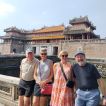
.png)
What Our Guests Say

.png)
Why with with us?
There are at least 4 reasons why you should book LvTravel and tour on our website.
- Partnership
- Tailor-Made Services
- Professional Team & Local Expertise
- Sustainable & Responsible Travel
Trip code:
0 reviews
Trip code:
0 reviews
Trip code:
0 reviews
Trip code:
0 reviews














